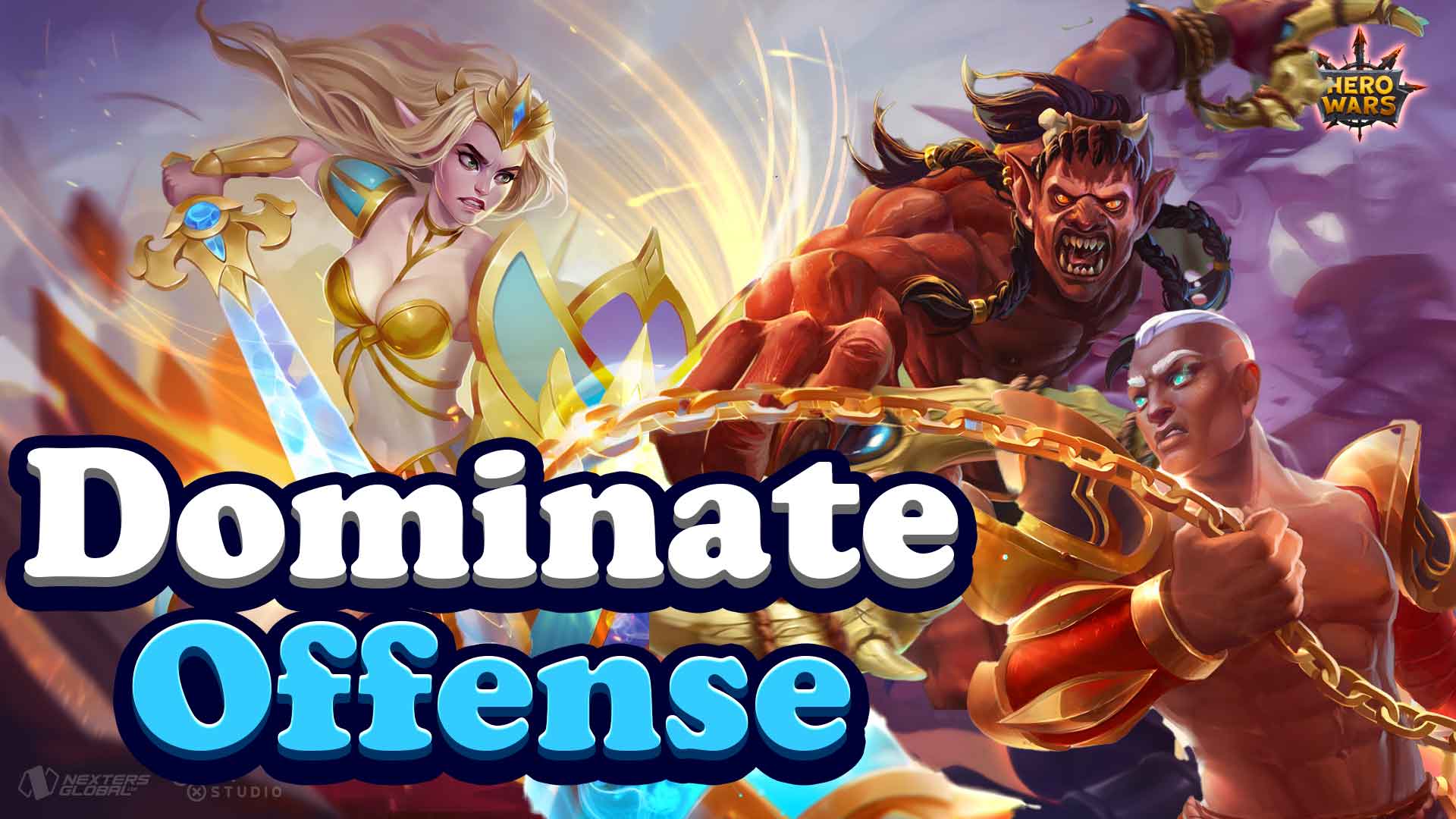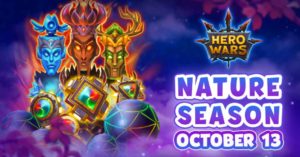Greetings, Heroes of Dominion! Zeus here with another insightful video. Today, I’ll be delving into the strategic intricacies of attacking in arena or Guild War. Many of you have expressed the need for a more detailed explanation of how to choose your attacking team, especially considering that not all players have fully developed hero rosters. So, let’s dive deeper into overcoming obstacles as we strategize our attacks.
In a previous video, we covered the logic behind building a solid defense, and it’s important to note that the same principles apply when crafting your attack team.
Let’s start with the basics. Before launching your attack, it’s crucial to analyze the type of defense the opposing team has in place.
1. Start your strategic analysis by observing the composition of the enemy team. Take note of how many heroes are fortified with armor artifact buffs. For instance, if you spot Astaroth and Martha among the enemy ranks, both equipped with artifacts that bolster armor, it’s a clear indication of a double layer of defensive protection. In such scenarios, your tactical decision-making should lean towards a magical attack strategy to penetrate through their defenses effectively. On the other hand, if there are no armor artifacts present in the opposing team’s lineup, exploiting this vulnerability with a physical assault becomes the prudent choice.
2. Next, evaluate whether any hero on the opposing side possesses the ability to grant dodge buffs to their entire team with their first artifact. The presence of such dodge-enhancing heroes can significantly alter the dynamics of the battle. Physical-centric teams may find themselves struggling against a dodge-heavy defense, necessitating a shift in strategy towards magic or pure damage approaches. However, if the opposing team lacks heroes capable of bestowing dodge buffs and is devoid of armor artifacts, seizing the opportunity with a physical assault strategy becomes the logical path to victory.
3. Scrutinize the defensive capabilities of the opposing team, particularly focusing on their magic defense infrastructure. Heroes such as Thea and Markus wield formidable abilities, empowering their entire team with magical defense buffs upon the activation of their first artifacts. This defensive augmentation persists for a notable duration of 9 seconds, significantly bolstering the team’s resilience against magical assaults. In the face of such fortified defenses, it becomes imperative to reassess your approach. Utilizing magic-based attacks against a team fortified with magic defense would be akin to striking a stone wall—futile and ineffective. Instead, redirect your strategy towards physical assaults or pure damage tactics, exploiting potential vulnerabilities and circumventing the opposing team’s defensive prowess with precision and adaptability.
4. Delve deeper into the defensive intricacies of the opposing lineup by identifying any resistance to pure damage. Heroes like Rufus and Andvari wield abilities that afford them a degree of immunity against pure damage, with Rufus further fortified against magical assaults. Such resilient defenses pose a formidable challenge to assail, demanding a strategic recalibration of your offensive maneuvers. In the face of adversaries endowed with resistance to pure damage, the most pragmatic course of action lies in leveraging physical attacks. By harnessing the raw power and versatility of physical assaults, you can circumvent the barriers of pure damage resistance and press forward towards victory with unwavering determination.
5. Ascertain the potential susceptibility of the opposing team to control effects, a critical factor that can sway the tide of battle. Teams devoid of stalwart defenders like Sebastian or Khorus are left vulnerable, susceptible to manipulation and control tactics with relative ease. However, if Sebastian or Khorus stand sentinel within the enemy ranks, a different approach becomes imperative. The presence of these formidable defenders necessitates a reconsideration of your strategy, urging a departure from reliance on control heroes. Instead, explore alternative avenues of engagement, leveraging strategic diversity and adaptability to outmaneuver your adversaries and emerge triumphant on the battlefield.
After meticulously assessing the vulnerabilities within the enemy’s defenses, the next crucial step is to strategically select your offensive approach. If you identify vulnerabilities in the enemy’s armor, opting for a physical attack strategy is the logical choice. Conversely, if their defenses exhibit weaknesses against magical assaults, a magic-based offensive strategy becomes the preferred option.
In cases where the opposing team lacks stalwart defenders like Sebastian or Khorus, exploiting this gap in their defenses by employing control heroes such as Arachne or Lian can tilt the odds of victory in your favor. The ability to manipulate and disrupt the enemy’s actions can prove invaluable in dictating the flow of battle and securing a decisive advantage.
However, the strategic decision-making process does not end here. It is essential to also consider direct counters among your available heroes. Heroes like Corvus, specifically tailored to counter adversaries like Yasmine, or Helios, adept at neutralizing threats posed by Keira, can provide a significant edge in battle. Similarly, heroes like Martha, with her innate ability to counter heroes like Jhu, offer a potent advantage that can expedite victory and ensure a smoother progression through the battlefield.
By methodically incorporating these considerations into your offensive strategy, you can effectively exploit weaknesses in the enemy’s defenses, capitalize on advantageous matchups, and pave the way for a decisive triumph on the battlefield.
Essential Battle Testing Tip
When testing in guild battles or combat training, it’s crucial to look beyond the binary outcome of victory or defeat. Game mechanics are intricate, and assessing two key factors can provide deeper insights into your team’s performance.
Firstly, consider the duration of the battle. If a battle extends beyond 30 seconds, there’s a possibility of timing out – meaning there might not be sufficient time to eliminate all opposing heroes, despite a potential victory outcome. Even a slight possibility of losing the battle could arise in such cases. Therefore, keeping an eye on battle duration can offer valuable foresight.
Secondly, evaluate the number of heroes lost during the battle. Ideally, your entire team should emerge from the test unscathed. If you find that more than two heroes are lost during the battle, it signals potential vulnerabilities in your team composition or strategy. This increased risk of losing heroes indicates areas that may require adjustment or improvement.
By considering both battle duration and hero losses, you can gain a more comprehensive understanding of your team’s performance and make informed decisions to optimize your strategies for greater success.
In our discussion so far, we’ve laid the groundwork for effective attack strategies, providing essential principles to guide your approach. However, we understand that many players face the challenge of limited hero options, making it difficult to implement these strategies fully.
In our upcoming video, we’ll delve into advanced techniques tailored for those with restricted hero pools. We’ll explore creative ways to overcome formidable defenses and achieve victory, even with limited resources at your disposal.
Stay tuned for our next video as we unlock the secrets of advanced attack strategies and empower you to triumph against any opponent, regardless of your hero selection.




